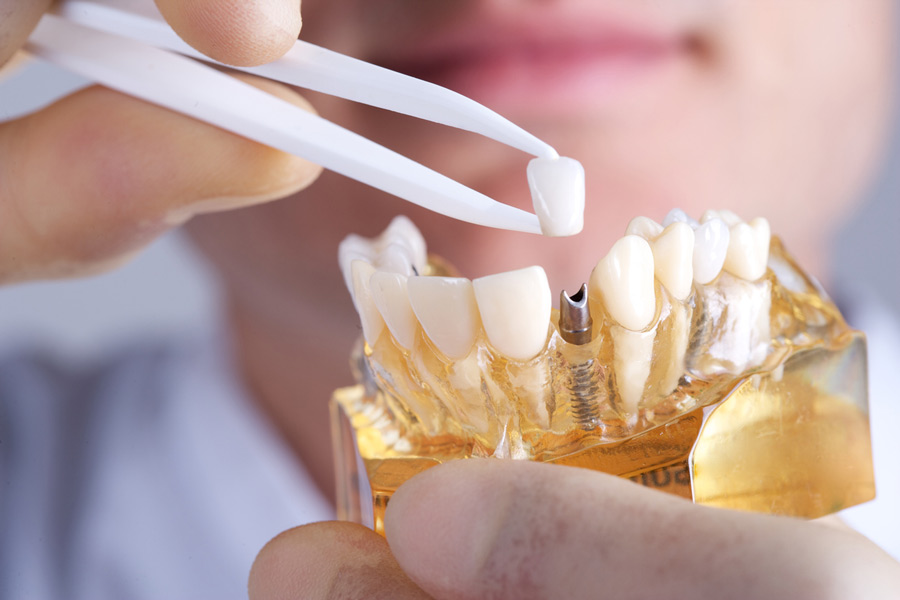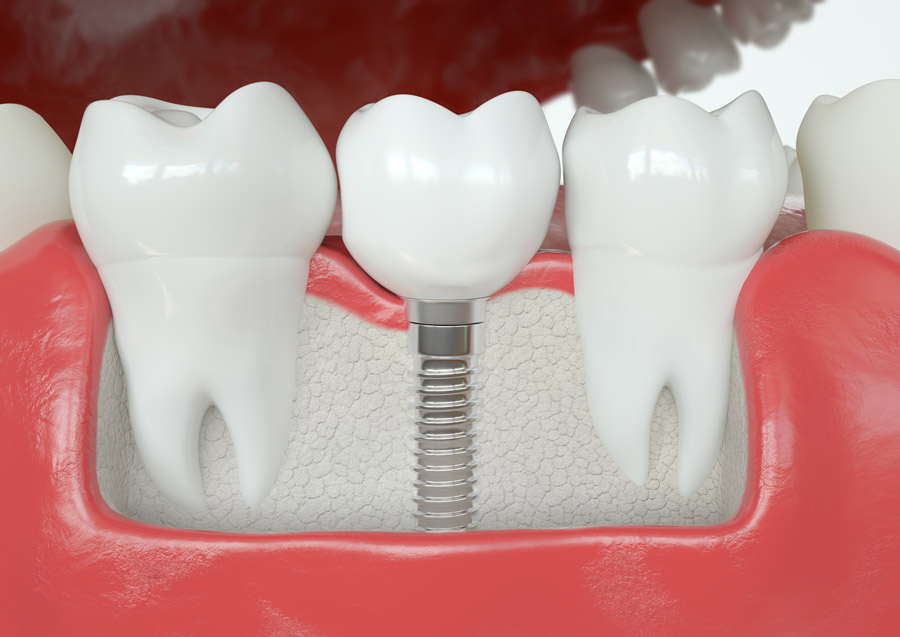Fixed Dental Implant Bridge vs. Implant Denture- What is the REAL Difference?
 Thanks to great strides in the field of dentistry, almost every dental situation now has a solution; several solutions actually, and all you have to do is choose between your options. Two such solutions are fixed dental implant bridges and implant dentures. The trick is in knowing what both these solutions entail and choosing the best one for you.
Thanks to great strides in the field of dentistry, almost every dental situation now has a solution; several solutions actually, and all you have to do is choose between your options. Two such solutions are fixed dental implant bridges and implant dentures. The trick is in knowing what both these solutions entail and choosing the best one for you.
What is a Fixed Dental Implant Bridge?
A fixed dental implant bridge is basically an implant-supported bridge. Unlike most dental bridges, an implant-supported bridge doesn’t depend on adjacent natural teeth as their anchor. Instead, an implant is placed into your jawbone in place of each missing tooth. The crowns are then interconnected to form one piece or bridge.
When is a Fixed Dental Implant Bridge Used?
Several situations call for an implant-supported bridge. Mostly, it is used when:
- Most of your teeth are missing
- Your dentist is concerned that any other kind of procedure may put too much pressure on individual implants or your natural teeth and this is especially true if the missing teeth are primarily those that are used for chewing or if you regularly clench or grind your teeth
- Most of your natural teeth and gums aren’t in good enough health to handle anything else
Fixed dental implant bridges still need to be placed on healthy jaws and next to healthy natural teeth. In case you don’t have enough bone to support the dental implant, the bone can be systematically built up using grafting or augmentation before you get the implants.
How Does a Fixed Dental Implant Bridge Work?
Although your dentist will decide the best course of action for your particular case, in most instances, they may not to place an implant in a specific location in your mouth. This happens for various reasons, but most commonly because there isn’t enough jawbone to support the implant. It may also be because the location is too close to a sinus cavity or a nerve. If this is the case, then your dentist may decide to place implants on both sides of the target space and an implant-supported bridge placed on top.
Your typical implant-supported bridge consists of the following:
- The implant:this is typically made out of titanium and is placed inside the jawbone. Every procedure is different depending on the patient,but typically, you may have one implant for each tooth that is missing. In some cases, your dentist may decide to skip a couple of spaces because they are too close to nerves or sinus cavities.
- The abutment:this is a cylinder that is screwed onto the implant. It is typically made out of gold, titanium or porcelain. Although almost all abutments are screwed into place today, in the past, they used to use cement! You can choose a prefabricated abutment,or you can have one custom-made by your dentist’s lab.
- The restoration:these are the parts that look like teeth. They are typically a series of crowns that are interconnected to one another to form a bridge. They are often made out of porcelain and fused onto a substructure of the metal.
You should know that it takes time to complete this process. Although it depends on many different factors, the typical time span is anywhere between five to seven months,and it will involve several dental surgeries.
What is an Implant Denture?

Implant-supported dentures often come into play when the patient doesn’t have any teeth but has just enough bone in their jaw to support a few implants. The dentures have special attachments that attach to other attachments on the implants used. This kind of option is often reserved for the lower jaw because regular dentures are much less stable on the lower jaw than they are on the upper jaw. That, however, does not mean that you can’t get implant-supported dentures for your upper jaw as well.
As is the case with regular dentures, you should take good care of implant-supported dentures by:
- Removing them daily for cleaning
- Not sleeping with them
Some people see this as a disadvantage and prefer a more permanent solution such as fixed dentures. Your dentist will advise you on which options are best for you depending on your particular dental case.
How an Implant Denture Works
There are two different types of implant-supported dentures: ball-retained and bar-retained. In each of these cases, the denture in question will be made out of an acrylic base which closely resembles your gums. The teeth will also be made out of porcelain,or you could get acrylic teeth that closely resemble your natural teeth. For both types of dentures to work, you need to have at least two implants in place.
- Ball-retained dentures:in this case, the implants have a ball-shaped attachment (male attachment) that fits into a socket (female attachment) that is on the denture or vice versa.
- Bar-retained dentures:here a metal bar that is curved in the same way as your jaw is attached to a few implants. Clips are then attached to or fitted to the bar as well as the denture you will be using. The denture is then clipped or snapped into place using the clips.
In most cases, the implants will be placed into the jawbone that is found in the front of your mouth. This is because this is the part that typically has more bone left over even if you lost your teeth a while back (you begin to lose bone in an area with missing teeth after a while). Plus, this part doesn’t have as many nerves.
So which one is best for you? It will really depend on what your dentist deems fit. Both procedures require surgery and the process takes months,but fixed dental implant bridges are a little less high-maintenance than implant dentures.
Relate Posts to Read:
Commonly Experienced Dental Bridge Problems & How to Avoid Them
Medically Fact-Checked & Written by Our Dental Editorial Team
You can read more about our editorial guidelines by clicking this link and learn more about the Emergency Dentists USA editorial team here.

